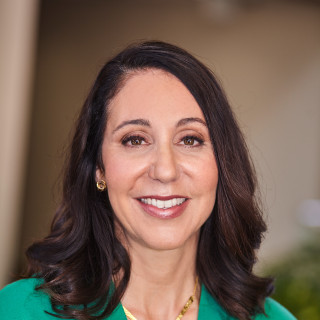
The American Society for Aesthetic Plastic Surgery (ASAPS) Aesthetic Meeting 2018 was recently hosted in New York City, bringing together a global network of innovators and experts in aesthetic plastic surgery. I was honored to a be a course instructor with Dr. Trent Douglas, my business partner and long-time colleague.
The course is designed to provide attendees with the nuts and bolts of how to start a private practice; we have recently opened our doors and many of the challenges we have overcome are fresh in our minds. Over the course of two hours, we discussed the many aspects of creating your own practice and the details that are important to keep in mind as you move forward. Here are the top five take home points of the lecture:
-
Have a vision — then make sure that vision matches with reality. Although you may dream of being the owner of a successful private practice, the amount of time, energy, patience and money required is not to be underestimated. Prepare yourself for more — more time, more energy, more patience and a lot more money to achieve your goal. Consider your support system — do you have a working spouse or are you single and still have medical school debt? Are you transitioning from training or an established practitioner looking for a change? My partner and I left after finishing careers in the Navy. Although we were financially stable moving forward we each have families and established ways of life that needed to be sustained to continue to live where we do. This was factored into our plans. Set your goals with a five-year, 10-year and 20-year plan.
-
Get your stuff together. Don’t try to move forward without organizing. Update your CV, pull all your licensing and credentialing documents into one place and gather your last 3 years of taxes and 3 months of paystubs. Preferably scan and upload these critical documents so that it will be easy to respond to the million requests for information from the banks, your accountant, insurance companies. By staying organized from the beginning the stress of these requests for information will be limited.
-
Negotiate. Shop around — never take the first offer and always getting a competing quote. Even if you take a meeting with a vendor you don’t use, you will learn another angle to consider when negotiating with your primary choice. We started discussions with five banks for our small business loan. By the time we narrowed the choices to 2 banks, they were competing for our business and improved our final terms. Remember that EVERYTHING is negotiable whether it be band-aids bought in bulk or a $200,000 laser. Maybe the device can’t be offered at a lower price (maybe!) but perhaps you can get additional consumables, an extended warranty or additional training days. I recommend reading “The Physician’s Comprehensive Guide to Negotiating” by Steven Babitsky. This book reinforces the philosophy that we owe it to ourselves and our family to be our own best advocates. Don’t be afraid to ask questions of other physicians. We learned that fellow surgeons were willing to share their experiences if they didn’t live in our immediate area. If you are a looking for a reason to join and actively participate in your national organizations — look no further — that national level network can provide invaluable colleague resources.
-
The Time vs. Money struggle is real. Take stock of your skill set and what you need to outsource to professional advisors. Ensure that they have medical specific experience and that you are getting results that represent you — from the interior design of your space to how your web site looks and reads. Make sure you have a clear understanding of your contract in terms of what is included with your professional advisors’ fee structure. I can still hear the “click” on the line when I would call the design team…. charging me for the time it took to ask a question. You won’t be able to manage everything, but by remaining engaged in their performance and the process you will make certain the results measure up to your standards.
-
Hire slowly, fire quickly. When it comes to hiring staff do your due diligence. Take the time to verify competencies and check references. Do a background check — both a formal one and a social media review. It is important that your staff represent you and your brand both at work and outside the office. Have an Employee Handbook and a Policies & Procedures Manual ready. Know your state and federal requirements for employment. Consider using an employment or compliance attorney and check with the resources for your state physician run society.
I promise you will screw some stuff up along the way. Hopefully they are small mistakes—just learn from them and keep moving forward. I guarantee there are mistakes my partner and I have made along the way we haven’t even fully realized. (Those will be presented at next year’s annual meeting!)
Starting your own private practice is both exciting and terrifying. The result is a career that allows for personal autonomy, flexibility and a culture that you have envisioned and created.
Katerina Gallus, MD is a Navy veteran, board-certified plastic surgeon, and proud business owner in San Diego, CA. A busy mother of three, she still fantasizes that the insanely expensive piece of equipment purchased to take photos will one day make espresso.
Want to be part of the Doximity Authors Program? We are accepting applications through May 23, 2018.







